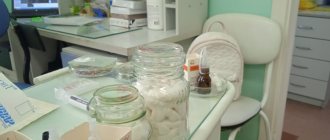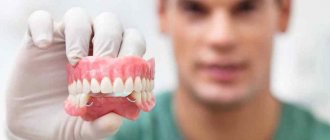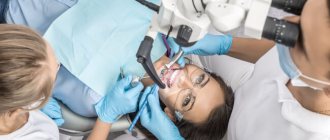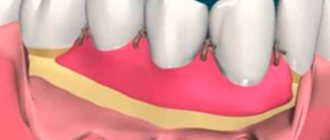Types of pediatric anesthesia How does it work?
Signs of proper sedation Drugs Indications Contraindications Possible complications Alternatives Most people associate going to the dentist with fear and stress. And if we are talking about a child, then the whole family is afraid of the visit. Therefore, the promises of dental clinics about dental treatment under anesthesia for children, without pain, in their sleep, sound like a balm. What is meant by “pain-free treatment” and is it as safe as we are told?
Sedation
– this is inhibition (depression) of the nervous system in order to relax and reduce anxiety. It does not exclude the use of local anesthesia, but simply helps overcome the fear of treatment. This is the main difference between dental treatment under sedation in children and the use of anesthesia.
But the word “sedation” did not catch on among the people, and gradually even dentists began to use expressions like “treatment of children’s teeth under anesthesia” in order to be understood by a wider audience. In this case, what is often meant is not general anesthesia, but rather sedation, a condition in which consciousness is suppressed while all protective reflexes are preserved and the possibility of contact with the patient is preserved.
Types of anesthesia for children during dental treatment
Depression of consciousness can be deep, medium and superficial.
Medicines can be administered in different ways:
- Orally
. This is how we take regular pills. - Intravenously
. Oddly enough, some children are more comfortable with an injection than with a mask on their face. - Inhalation
. This is the most common way of administering drugs. Nitrous oxide is most often used.
Our prices
When using nitrous oxide in dentistry
For children, the price of the procedure increases slightly. This is explained by the fact that expensive equipment is used, plus another doctor is involved in the operation to monitor the patient’s condition. But sedation can save the child from suffering, so it’s better not to skimp on it.
Prices
Use of nitrous oxide sedation
85 rub./minute
At the children's dental clinic " Natadent"
» you can receive high-quality treatment using modern methods of sedation and anesthesia without overpayments. Despite the use of expensive advanced equipment, we strive to keep prices at an affordable level.
How it all happens
Treatment of children's teeth under anesthesia begins with an acquaintance and conversation with the doctor. Sometimes they play cartoons in the office, and some clinics offer toys. Then he is allowed to examine the mask, is asked to try it on, and they begin to supply pure oxygen, to which nitrogen is gradually added, increasing its concentration. After a couple of minutes the child falls asleep. After this, sensors for monitoring his condition are connected to him and treatment begins.
The duration of dental treatment in a dream varies depending on the defect, complexity of the process and other factors. At the end, they are given oxygen again. After the procedure is stopped, the child wakes up gradually. He is under the supervision of doctors for at least an hour in a specially designated room. That day it is better for him to stay at home and not visit the children's group.
When using tablets or intravenous drugs, the algorithm of action is the same, only without a mask and oxygen.
At what age can teeth be treated with sedation?
Most often, teeth can be treated under sedation starting from the age of 3 - it is from this age that the child can already contact the doctor, understand what he wants, and fulfill his requests.
Up to 3 years, if long-term extensive treatment is necessary, anesthesia is used. The duration of treatment under sedation depends on the dental treatment, but can be up to 1 hour.
This is due to the effect of the anesthetic, which the doctor administers before starting treatment, and the fact that it is difficult for the child to sit in one uncomfortable position for more than 1 hour. During this time, you can treat 2-3 teeth in one area of the dentition. When using sedation, an individual approach is required - the doctor focuses on the patient, his condition, and the duration of dental procedures.
What drugs are used
Nitrous oxide or other drugs are used for inhalation anesthesia. The instructions for use of such drugs list as side effects: respiratory problems, cardiac depression (depending on the dose), nausea, vomiting. But worst of all, with a genetic predisposition, a dangerous disease can develop
[1] – hyperthermia. The chances of this happening are slim, but no one does genetic testing before dental treatment, so the possibility cannot be ruled out.
Other drugs are used intravenously and orally (in tablets), which also have side effects, although not as pronounced.
How does nitrous oxide sedation work?
This procedure should not be confused with general anesthesia. During treatment under sedation, the child does not sleep, but is in a relaxed state. He continuously breathes through his nose with a special breathing mixture in which ordinary nitrogen is replaced by nitrous oxide (N2O).
It is a harmless gas with a pleasant odor, which when inhaled improves mood, relaxes and dulls the feeling of fear. Thanks to this, the child sits calmly in the chair, is not afraid of dental instruments and allows the doctor to treat his teeth.
Nitrous oxide sedation in pediatric dentistry
preferable in the following situations:
- the child experiences panic and refuses treatment;
- with any manipulation of the dentist in the oral cavity, he experiences bouts of nausea;
- a complex and lengthy procedure is expected, and general anesthesia is not suitable for some reason;
- the child is afraid of treatment due to negative experiences in the past;
- This is the first dental treatment, and parents do not want their child to develop a fear of dentists.
To better understand how children
During
dental treatment with nitrous oxide
, remember how you feel after a glass of wine. A good mood, a dulling of fear, a feeling of comfort and serenity - all these feelings help the child to relax and calmly watch a cartoon while the dentist is working on his teeth.
When is it worth treating children's teeth under general anesthesia in dentistry?
Due to the fact that the terms “sedation” and “anesthesia” are often used interchangeably, it is not always clear which procedure is being referred to.
If you were offered dental treatment for children in a dream, clarify this means sedation or anesthesia.
The main rule is that if you can avoid anesthesia, it is worth doing. Sedation is preferable, although it is also not a panacea. Studies on the long-term effects of general anesthesia show that the use of anesthesia can lead to problems in the development of cognitive functions
[2], especially if it is used repeatedly, which happens when treating children’s teeth in clinics where they take general anesthesia lightly.
There is a risk when using anesthesia
[3]:
- Airway obstructions
. This may be due to anatomical features (adenoids, enlarged tonsils), incorrect position of the jaw or tongue, or accumulation of sputum. Equipment failure can also lead to collapse. - Hemodynamic problems
. Complications include: slow (bradycardia) or, conversely, rapid (tachycardia) pulse, drop in blood pressure, puncture of a vein with a needle.
After such anesthesia, children may experience nausea, vomiting, impaired thermoregulation, muscle tremors, allergic reactions, and inappropriate behavior.
Anesthesia is recommended only in cases of absolute intolerance to local analgesics; in other situations, local anesthesia or, in extreme cases, sedation should be preferred.
Sedation does not have such a radical effect on the body, but the risks remain the same - problems with breathing and circulation.
In the vast majority of cases, complications during the use of anesthesia are caused by a doctor’s error. You need to be absolutely sure of:
- doctor's qualifications and experience;
- equipping the clinic with the necessary equipment to monitor the condition during anesthesia and to provide assistance if something goes wrong.
Although dentists have special training in the administration of sedatives, anesthesia should only be administered by an anesthesiologist.
Sedation and anesthesia in the treatment of special children
When treating teeth in children with mental or physical developmental disabilities, both methods can be used.
Their choice is determined by an individual approach and depends on the child’s communication abilities. If he can communicate with the doctor and fulfill his requests, then sedation can be used. If communication is difficult or impossible, anesthesia is used. A preliminary diagnosis, tests, and detailed consultations with an anesthesiologist and pediatrician, and with the child’s attending physician are carried out. This is necessary for the safety of the procedure. At the clinic, parents will be helped to properly prepare their baby for treatment under anesthesia.
Although sedation is actively used in pediatric dentistry, adaptation and establishing trust between the child and the doctor is still the most important aspect of preparation for treatment. Sedation is a tool that relieves unpleasant emotions, and an adaptation technique allows you to permanently rid your child of the fear of treatment.
Published on the portal nnmama.ru
Advantages of SM-Dentistry
- Qualified pediatric dentists Specialists have extensive experience working with children and are well versed in child psychology. They know how to conduct treatment in a playful way. Our little patients love visiting dentists, are happy to come for preventive examinations and understand their importance.
- Comprehensive services The center’s dentists monitor the condition of the jaw apparatus of small patients from the moment the first tooth appears. They take into account all the anatomical features of the child and select the optimal treatment option. Doctors teach the child and parents how to properly perform oral hygiene.
- High-quality materials We use exclusively certified materials and medicines from world-famous manufacturers. We use only anesthetics that are safe for children. The clinic is equipped with the most modern equipment for the diagnosis and treatment of dental diseases.
You can find out more details and sign up for a consultation with a specialist by calling: +7
, or by filling out the form:
Nitrous oxide in dentistry for children: harm and side effects
Parents are interested in whether nitrous oxide is harmful and what the consequences may be. The substance has a mild effect, but in order to completely eliminate all side effects, it is important to identify contraindications. They may be:
- Impaired nasal breathing.
- Otitis in any form.
- Possibility of seizures, epilepsy attacks.
- Risk of allergy to components, as well as food or drug allergies.
- Increased intracranial pressure.
- Recent concussion.
- Mental disorders in a child.
The greatest danger is an allergic reaction. This is a deviation that doctors are unable to predict. Therefore, in a situation where certain disturbances occur immediately after the gas is supplied, the procedure is immediately stopped and an antihistamine is administered to the child.
In a situation where a child has hyperexcitability, the benefits and harms are assessed individually. The doctor should discuss other treatment options with the parents so as not to endanger the patient.
In general, it has been proven that there is no harm from nitrous oxide. The method has long been actively used in most large dentistry and has shown only the best side. Proper calculation of the dosage and concentration of the substance, combination with reliable and safe anesthetics allows dental treatment to be carried out as comfortably as possible. It has been proven that the stress a child receives from visiting the dentist has a more harmful effect. It causes fear that remains for life. Sedation acts gently, relaxes the body, benefits the nervous system and does not cause any dangerous side effects.
Do I need to prepare my child for sedation?
In principle, no. You should not overeat before the procedure. It is better to refrain from strong emotions the day before.
If in doubt and want to be on the safe side, you should take a general blood test and do an echocardiogram. You can show the doctor your medical card or tell in detail about past or chronic illnesses.
Is it worth telling the baby about the upcoming treatment? Here each parent decides for himself.
Some experts advise not to tell anything, because they themselves will tune their patient to the desired wavelength. Some children are so anxious that they don’t trust anyone except their dad and mom. Then it’s worth informing in advance what will happen in the doctor’s office. You can promise a prize to the bravest, and when it's all over, go to the toy store.
Anesthesia and sedation: what are the differences?
First of all, anesthesia implies a complete shutdown of consciousness and reflexes. During anesthesia, the patient cannot speak, interact with the doctor, or generally be aware of what is happening. Sedation, on the contrary, leaves the patient conscious (partially) and preserves all reflexes. Of course, anesthesia involves the use of another group of drugs that help achieve a certain state. In a sense, the effect of sedation is also achieved during anesthesia: this is one of its stages when, before falling into deep sleep, the patient experiences calm and tranquility. Anesthesia is considered a radical measure, especially for a fragile child’s body. It is not recommended to put a patient (and especially a child) into a state of anesthesia unless absolutely necessary, since potent drugs are used here, which also affect the functioning of the cardiovascular system.
Contraindications
Sedation is not anesthesia, which has an extensive list of prohibitions on its use. Its negative impact on the human body is minimal. However, this gentle method of sedation also has a certain number of contraindications:
- individual intolerance, allergies to medications;
- colds, flu, ARVI;
- infectious diseases (tuberculosis, hepatitis);
- certain types of chronic diseases;
- myasthenia gravis;
- mental disorders;
- pregnancy;
- alcoholism, drug addiction.
Dental treatment under sedation in children is the best alternative to anesthesia
A child's first visit to the dental office can leave a different impression. Children almost always tolerate a simple examination or removal of a loose baby tooth well and remain very pleased with themselves. If it is necessary to cure caries, there is a risk of instilling in the child a fear of dentists, which will persist even into adulthood.
The best way to avoid stress and unpleasant memories is treatment of baby teeth under sedation
. This is an effective and safe alternative to general anesthesia, for which there are practically no contraindications. It can be used in the treatment of children over 3 years old (this method is not suitable for very young children, since they will not be able to explain that they need to breathe only through their nose).
How is the sedation procedure performed?
The procedure consists of several stages. First, you need to get a consultation with a dentist - you meet the doctor and draw up a treatment plan.
For sedation, the patient will need to do a few simple tests:
- ECG.
- Donate blood for general analysis and biochemistry (detailed).
- Donate blood and get test results for hospitalization (for syphilis, HIV, hepatitis).
- If you have diseases, obtain permission from a specialized specialist.
The finished results are sent to the clinic administrators. Be sure to write the surname, initials of the patient and the dentist. The documents are submitted for review to the anesthesiologist, who decides on admission to the operation under sedation and takes into account the possible consequences.
The administrator contacts the patient to clarify the date and time of arrival at the center. On the appointed day, it is recommended to arrive early for the appointment, but do not use personal transport. If necessary, administrators will help you call a taxi to get you back home.
Before the procedure begins, there is a conversation with the anesthesiologist. In the operating room, an individually selected dose of anesthetic will be administered through a nasal catheter and wire. Unlike anesthesia, the patient continues to breathe on his own, plunging into a pleasant half-sleep, without negative sensations. At the end of treatment, the patient is escorted to the rest room, where he has the opportunity to lie down and rest.
Why is it so important not to scare a child?
The most difficult thing in dentistry is not to scare a child.
Unfortunately, this is often done for us by some strange grandparents who scare the child with doctors. Please never tell your children things like: “If you eat candy, you will ruin your teeth. And then the doctor will use a terrible drill to drill your teeth.” Sooner or later, a small patient will have to encounter a dentist. And we would like him to trust us, and not run away screaming at the sight of a white coat. Otherwise, everything can end with persistent dental phobia, a mouth full of dentures and a bunch of problems for life. PS
In previous posts about palatal expanders and the scientific approach to dentistry, you asked about the clinic. If you want to treat your teeth with us, then say “I’m from Habr”, there will be a small 5% discount.
Types of pain relief in children
Before starting dental treatment, the doctor simply gets to know the child and talks about the equipment and tools in an entertaining way. After examining the oral cavity and making a diagnosis, the doctor notifies the parents in detail about the treatment plan. If a painful manipulation is required, one of the methods of anesthesia is used.
Local anesthesia
This is usually a combination of a topical spray to give the injection and an injection of anesthetic. The medicine is diluted taking into account the baby's weight. For application, a gel or solution based on lidocaine is often used. Articaine, a vasoconstrictor, is suitable for injection.
General anesthesia in dentistry for children
This is the only possible option in difficult cases. The method is used only when it is impossible to eliminate the pathology otherwise.
Alternative pain relief
In cases of moderate complexity, sedation is popular. Using the game moment, the baby is put on a mask. Inhalation calms and relaxes the child. He can follow the doctor's instructions. You can treat a child’s teeth under sedation by supplementing its effect with an injection of an anesthetic.
Dental treatment during sleep with sedation
In our clinic, drug sedation is used for children over 8 and up to 16 years of age for the treatment of permanent teeth that require several visits to the clinic.
There are several indications for sedation: special patients, dental phobia, increased gag reflex, allergy to local anesthetics, insensitivity to local anesthesia, large volume of treatment and removal of complex teeth.
Patients with special needs
(autism, cerebral palsy, epilepsy, Down syndrome, etc.)
Such children need special attention and a special approach when diagnosing and treating teeth. They often react negatively even to attempts to examine the oral cavity. Therefore, sedation or anesthesia is used to study the condition of teeth and correct pathologies.
Dental procedures can be performed for children with special mental needs if:
- there is an understanding of the addressed speech
- the doctor manages to establish contact with the child
- the patient can comply with the dentist's requests and commands
For special patients, sedation is important. Thanks to her, the doctor can:
- conduct a full examination and assess the condition of teeth and gums
- perform conservative treatment and tooth extraction, and even perform orthodontic manipulations, if the treatment regimen fits into 1-4 visits
- have your teeth professionally cleaned. In special patients, oral hygiene is most often difficult, which can cause the formation of stones and caries.
Modern drugs make it possible to treat teeth with comfort and a high degree of safety in children with lesions of the nervous system. Sedation helps reduce seizure activity, so during anesthesia there is no need to worry about seizures - this issue always worries parents of children suffering from epilepsy.
This type of sedation is most often used:
- in children with severe fear of dental treatment;
- in patients with an expected complex surgical procedure (for example, complex or multiple tooth extractions);
- “special” patients need intravenous sedation, people with damage to the central nervous system - autism, cerebral palsy, epilepsy, Down syndrome, etc., that is, in cases where it is impossible to establish contact between the doctor and the patient. For children with neurological diseases, this is the most comfortable way to get the help they need.
Dental phobia
Every year, fortunately, there are fewer and fewer patients who are afraid of dental treatment. However, sometimes children and adolescents with dental phobia still occur. Such patients refuse to open their mouth even for examination, they become anxious and cannot overcome their fear. We are categorically against coercion; examination and treatment should not cause psychological trauma.
Treatment during sleep in adolescents is a transitional stage of adaptation to dental treatment. According to statistics, at RuDenta over the past 5 years we have been able to significantly reduce the frequency of repeated anesthesia and sedation from 48% to 9% thanks to the introduction of a special adaptation program into clinical practice.
Patients with an increased gag reflex
With an increased reflex, patients react by gagging to touch or pressure on certain areas of the oral cavity. Also, nausea and even vomiting can occur against a background of anxiety and fear before visiting the dentist.
In both cases, sedation comes to the rescue.
Patients with allergies to local anesthesia
Every year the number of children with allergies to local anesthetics increases, and often the reaction occurs not to the drug itself, but to the components of the solution or packaging. The most common is latex allergy, so RuDenta kids use anesthetics packaged in a capsule with lactase-free rubber.
In case of severe allergies, we do not use sedation (it does not relieve pain and requires the administration of local painkillers during the procedure), but anesthesia.
Large volume of treatment
In children, caries develops rapidly, often affecting several teeth at once. If you delay a visit to the dentist and timely treatment, you may face the need for multiple treatments. Or use sedation - while the child is sleeping, the doctor can carry out professional cleaning, filling, and even remove several teeth at once. This is especially true if you are leaving for a country or city where there is no guarantee of quality dental care, or the clinic is located far from home.
Removal of complex teeth
Intravenous sedation in this case helps both the doctor and the patient.
The child sleeps peacefully
while numerous manipulations are performed without experiencing pain, discomfort, anxiety and fear.
The dentist can work comfortably, since the patient is immobilized, and his mouth is wide open and fixed - ideal conditions for removing teeth, including complex eights or their rudiments.
The use of sedation during this procedure allows you to:
- reduce bleeding intensity
- reduce post-operative swelling
- reduce the duration of manipulation
The work of the anesthesiologist deserves special attention. In addition to carefully monitoring the depth of sedation, they:
- antibacterial agents are administered BEFORE tooth extraction, which significantly reduces the likelihood of infection and inflammation in the postoperative period
- painkillers are administered that will protect the child from discomfort after waking up
Why Trilogy?
We will treat your diseased tooth, sharpen your teeth before installing a crown or veneer, remove a cyst, or perform another treatment procedure under sedation with a nitrogen-oxygen mixture at your first request. It is very important for us to maintain the patient’s trust and find contact with him. Therefore, we will do everything to ensure that after visiting the clinic you have only positive impressions.
Dental procedures performed under sedation with a nitrogen-oxygen mixture by doctors at our center are not only medical procedures that do not cause discomfort, but also an absolutely safe event. Doctors at the Trilogy clinic have at their disposal special equipment for performing ZACS. It is a complex consisting of a rotameter, a reserve bag, a breathing circuit with a nasal mask and a gas source. All equipment is new, regularly checked for faults and can be easily sanitized.
Leave your contact phone number so that we can tell you more about how to treat a tooth without pain and fear, schedule a convenient time for you to visit a dentist, and provide information about current prices for the procedure.
Reviews
In Europe and the USA, sedation is almost always used in the treatment of children's teeth. In Russia, this practice is not yet so rooted, and is used mainly in large cities. Even in Moscow
There are not many places
that provide dental treatment for children with sedation
.
Natadent Clinic
was one of the first to master this technique, thanks to which today we can delight our little patients with quick and painless treatment in a pleasant, friendly environment. Children and their parents are always satisfied with the service, as you can see by reading the reviews they leave.
LEAVE FEEDBACKFAQ
Is it possible to eat before anesthesia?
No you can not. And parents need to not only tell their child about this, but make sure that he doesn’t eat too many cookies from his secret reserves. The child is hungry, he will try to eat at least something. Anesthesia on a full stomach may result in vomiting during treatment or upon awakening. If it is “in the process of treatment,” then the substance can block the airways, which is not necessary for anyone.
How easy is the anesthesia to tolerate?
If all protocols are followed and the process is monitored by an experienced anesthesiologist, then everything goes without problems or any special side effects.
To do this, we comply with all protocols and everything that is necessary for complete safety. For example, here is a study that suggests that with proper anesthesia with propofol and isoflurane, all side effects after waking up last less than a day. But sometimes our hair just stands on end when a mother comes to our clinic after a not very proper anesthesia in another place. We usually catch these parents with a week's worth of food and the moral expectation of three days of continuous vomiting and dizziness after waking up. Here you immediately understand that in another place the general anesthesia did not go quite right.
Will he really wake up?
Yes. It's not a matter of probability, it's a matter of following protocol. You need to check the equipment, have a doctor with the required qualifications, and understand the characteristics of a particular patient. Then there will be no surprises. The process is closely monitored by an anesthesiologist-resuscitator, who is ready to intervene at any time and adjust the anesthesia parameters. He knows how to smoothly introduce and recover from anesthesia, and knows all the nuances of resuscitation measures in children.
I was told about doctors who are against anesthesia
Yes, this happens.
But I think that they are not entirely right and they simply do not have a good anesthesiologist. The safety of general anesthesia for the health and mental abilities of the baby is confirmed by numerous studies. For example, they took 19,296 children and studied their development after many anesthesia experiences up to the age of 20. The results prove that everything is fine, and the children are no different from their peers. At the same time, many sources still come to the conclusion that repeated anesthesia before the age of two is undesirable. In general, sometimes misunderstanding and fear of general anesthesia take strange forms among some doctors. I remember one wild case when a doctor tried to protect children from terrible anesthesia by replacing it with temporary suffocation with a towel. Binds, holds and treats half-strangled. Such a kind doctor. Moreover, in fact, she uses a version of raush anesthesia. It’s just that it was relevant several hundred years ago, when even ether anesthesia was not invented, and the only option to carry out a conditional amputation was a precisely calculated blow to the crown of the head with a wooden mallet. But it was difficult to control the “depth” of such anesthesia and guarantee successful awakening.
What happens to the eyes during treatment?
The eyes dry only during deep anesthesia; in our case, they are sufficiently moistened with tears. The patient's eyelids are fixed with a special plaster. This way the eyes remain closed and the mucous membrane does not dry out. Well, there is no risk that something could get into them.
Will hair fall out after surgery?
I know it sounds strange, but parents ask this. The point is this: if you lose a lot of blood during surgery, hair loss may be a side effect. But when a mistake is made in surgery, it is most often attributed to uncontrollable factors in the spirit of: “This is a drug for anesthesia,” and not to the fact that someone was unable to perform the manipulation on time or did not make the right decision. And the anesthesiologist has nothing to do with it.
Will this affect the child’s memory or damage the brain?
It won't have any effect - neither good nor bad. The anesthesiologist carefully monitors the saturation level so that the young brain receives enough oxygen. The device does not supply pure gas, but mixed with oxygen. All sensors are built into the ventilator. If necessary, the doctor can, for example, adjust the composition of the gas mixture. All drugs have an excellent safety profile and a bunch of studies confirming their safety when used in pediatric patients. We also know how to work quickly. If on very voluminous interventions we used to work for six hours, then up to four, up to three, now the average duration is no more than 2.5 hours: this, in particular, is why technology and a professional team are needed.
Will he have bad dreams?
Will not. The child will not remember the process of anesthesia itself and, most likely, some short period before it. Just try not to frighten him again: children are very impressionable. Then we will try to make everything as comfortable as possible for him: he fell asleep, woke up, and then played.
Stages of the procedure
1. Preparation
The doctor explains to the child the nature of the sensations that will appear after inhaling the drugs. In a playful manner, he places the patient in a chair and puts on the device. Gas supply begins. The gas has a slightly sweet taste, causes relaxation in the body and slight inhibition of consciousness, dulls the feeling of fear, and reduces susceptibility to pain. The baby does not experience any unpleasant sensations.
2. Treatment
After several breaths of gas, the child calms down. The doctor performs diagnostic or therapeutic procedures. During the process, the baby watches cartoons or listens to the doctor. Throughout the procedure, the doctor monitors the patient’s condition, communicates with him, and checks his reaction to external stimuli.
3. Recovery from sedation
At the end of the main manipulations, the gas supply through the mask stops. After just 5 minutes, the sedative is removed from the body, the patient returns to his normal state and can go home with his parents. Local anesthesia, which complemented medicinal sleep, wears off after 1-2 hours. Sedation does not affect the effectiveness and duration of action of local anesthetics.
CONTRAINDICATIONS for SEDATION
There are very few contraindications for this method of treatment:
- violation of nasal breathing (since the drug is supplied and eliminated through inhalation through the nose)
- epilepsy, seizures
- traumatic brain injury 3 months (or less) before treatment
- increased intracranial pressure - the inability of a child and a doctor to communicate due to illness, age (up to 3 years) or strong fear of the dentist. In this case, it is recommended to resort to treatment during sleep.









